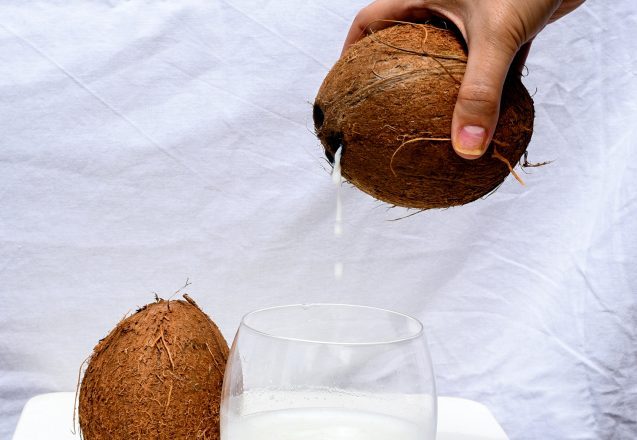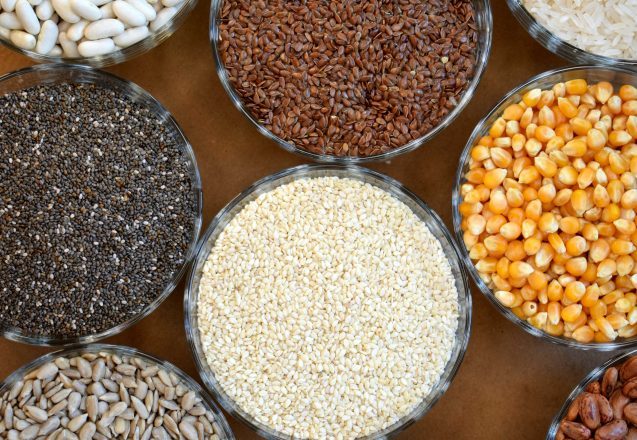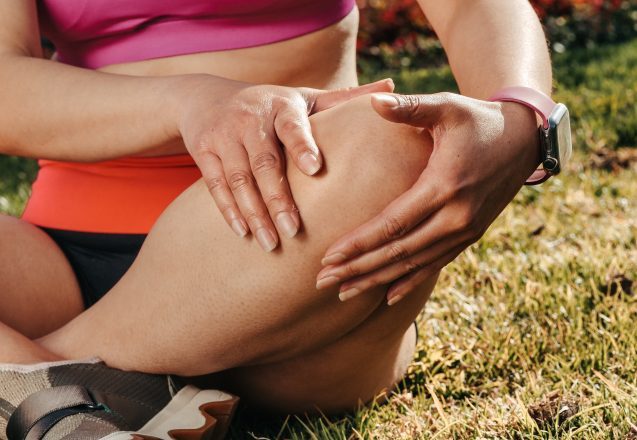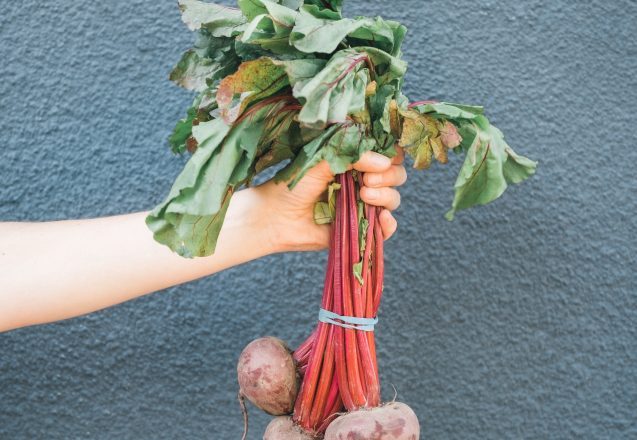Do Portion Sizes Matter When I’m Eating Healthy?
 If you’re eating a giant salad filled with lettuce, onions and other fresh veggies, you can eat all you want, but still pay attention to how much dressing you’re using, because for most dressings, portion sizes do matter. Eating healthy does mean you can consume a lot of raw veggies and still not worry about whether you’re overeating. In fact, the recommended portions of non-starchy vegetables is five or more servings. So, for non-starchy vegetables, eating enough servings is the only reason to track portions.
If you’re eating a giant salad filled with lettuce, onions and other fresh veggies, you can eat all you want, but still pay attention to how much dressing you’re using, because for most dressings, portion sizes do matter. Eating healthy does mean you can consume a lot of raw veggies and still not worry about whether you’re overeating. In fact, the recommended portions of non-starchy vegetables is five or more servings. So, for non-starchy vegetables, eating enough servings is the only reason to track portions.
Sometimes, you need a treat.
It’s always good to understand portion size, since you’ll be eating more than just non-starchy veggies and fruit. However, sometimes, you want a snack or treat. Nuts are a healthy option, but they’re also loaded with calories. You have to pay closer attention to the amount you eat. Even if you’re eating healthy, there are still temptations and special occasions that can throw you off the healthy eating track. You don’t have pass on a piece of your own birthday cake or say no to other special treats if you keep portion size in mind and do it infrequently.
Peanut butter can be a beneficial snack, so can veggies and dip.
If you use your vegetables as a carrier for mountains of dip or slather the apple slice with so much peanut butter you can’t recognize it, you need to learn portion control. You can use your hands to judge snacks on the go. One serving of peanut butter is two fingers worth. One serving of nuts is a level handful. How much dip you consume depends on how it’s made. If you’re putting cottage cheese in a blender and adding herbs and spices, ¼ cup of cottage cheese is one serving.
Let your plate be your guide.
While eating healthy is extremely important, portion size still plays a role. A good way to measure your portions is by using your plate. Half your plate should be salad and vegetables. A fourth of the plate should be your protein option, whether it’s vegetarian or meat. Complex carbs should also have a fourth of the plate, while high fat foods should only be a teaspoon and a half.
- Starchy foods, such as potatoes, corn and peas use a fist as a measurement for one portion. Use your thumb as your guide to measure fats. For men, it’s two thumbs of butter or other fat. For women, one thumb is a portion.
- It’s hard to stick with portion size when eating in restaurants. Too often, restaurants have larger portions. If it’s offered, ask for a child’s meal or use appetizers, like shrimp cocktail and side dishes, to create a meal.
- Pay close attention not only to portion control and food, but how that food is served. Instead of drinking a ½ cup of fruit juice, you can eat a whole cup of fresh fruit and it’s better for weight loss.
- Always read labels. It’s a great way to see how portion control can affect even healthier diets. Check out how many calories per serving. For potato chips, one serving is 160 calories and is 15 chips. So it’s approximately 11 calories per chip. Most people don’t stop at just a few.
For more information, contact us today at Revolution Training



 What you eat and don’t eat or drink does make a difference. That’s one reason the potential for going dairy free has been more frequently discussed. Some clients at Revolution Training in Stamford, CT know they’re lactose intolerant or have milk allergies, so the decision is simple for them. They avoid dairy to prevent a negative reaction, which can prevent digestive issues that include gas and diarrhea or for milk allergies, can actually be life threatening.
What you eat and don’t eat or drink does make a difference. That’s one reason the potential for going dairy free has been more frequently discussed. Some clients at Revolution Training in Stamford, CT know they’re lactose intolerant or have milk allergies, so the decision is simple for them. They avoid dairy to prevent a negative reaction, which can prevent digestive issues that include gas and diarrhea or for milk allergies, can actually be life threatening.
 Everyone understands it’s time for celebration when you reach a major goal, but that success came with little achievements along the way. It’s why long term goals are broken down to short term goals. You can see success sooner and celebrate the small wins. That can keep your motivation running high and put you steps closer to the ultimate goal. There’s nothing wrong with a pat on the back when you’re sticking with a program and scoring success.
Everyone understands it’s time for celebration when you reach a major goal, but that success came with little achievements along the way. It’s why long term goals are broken down to short term goals. You can see success sooner and celebrate the small wins. That can keep your motivation running high and put you steps closer to the ultimate goal. There’s nothing wrong with a pat on the back when you’re sticking with a program and scoring success.
 More and more people are aware of fitness today, and some choose a more plant based diet to help them get fit. In order to do that and build lean muscle mass, a good source of protein is necessary. Animal protein is complete, meaning it contains all the 9 essential amino acids our bodies can’t make. It’s a little more difficult to get that in a plant based diet, since many of the sources are incomplete. Finding the best plant based protein can be difficult, even in Stamford, CT.
More and more people are aware of fitness today, and some choose a more plant based diet to help them get fit. In order to do that and build lean muscle mass, a good source of protein is necessary. Animal protein is complete, meaning it contains all the 9 essential amino acids our bodies can’t make. It’s a little more difficult to get that in a plant based diet, since many of the sources are incomplete. Finding the best plant based protein can be difficult, even in Stamford, CT.
 The body was designed to move in a lot of different ways to be its healthiest. It needs strength training, flexibility training, balance and endurance training. Another name for endurance training is cardio. That’s because it exercises the cardiovascular system. The cardiovascular includes not only the arteries, blood vessels and capillaries, it also includes the heart. One of the simplest cardio exercises is running, so it makes sense that running is good for your heart. It also provides many other benefits for your health.
The body was designed to move in a lot of different ways to be its healthiest. It needs strength training, flexibility training, balance and endurance training. Another name for endurance training is cardio. That’s because it exercises the cardiovascular system. The cardiovascular includes not only the arteries, blood vessels and capillaries, it also includes the heart. One of the simplest cardio exercises is running, so it makes sense that running is good for your heart. It also provides many other benefits for your health.
 Whether you strained your back, sprained or tore a muscle or have any other injury, at Revolution Training in Stamford, CT we modify your workout to match your needs. There are exercises and modifications that can be made, which allow you to workout with a knee injury, too. Meeting your special needs is a top priority. If you’re working out at home, here are some tips to help you do that.
Whether you strained your back, sprained or tore a muscle or have any other injury, at Revolution Training in Stamford, CT we modify your workout to match your needs. There are exercises and modifications that can be made, which allow you to workout with a knee injury, too. Meeting your special needs is a top priority. If you’re working out at home, here are some tips to help you do that.
 If you think that working out longer will get you more results, maybe you should time your workouts and actually limit your time, rather than extend it. If everything is based on how many minutes, you’re at the gym, you’ll be surprised at how many side trips to the water cooler or stops to talk to another client that you make. It’s also important not to skip a few minutes and rush through your time in the gym, but to find the perfect point where you get a good workout but aren’t wasting time or exercising beyond the point where it’s safe and healthy.
If you think that working out longer will get you more results, maybe you should time your workouts and actually limit your time, rather than extend it. If everything is based on how many minutes, you’re at the gym, you’ll be surprised at how many side trips to the water cooler or stops to talk to another client that you make. It’s also important not to skip a few minutes and rush through your time in the gym, but to find the perfect point where you get a good workout but aren’t wasting time or exercising beyond the point where it’s safe and healthy.
 If you have a question of how often to work out as a beginner, you first have to identify exactly what you count as a workout. Clients at Revolution Training in Stamford, CT understand exactly what that means. If you’re coming to the gym pressing weights, boxing at peak intensity and pushing yourself to the limit the answer is one thing. If you’re taking the pace easier, it’s quite another. The type of exercise you’re doing, strength-training, aerobic, flexibility or balance, make a difference, too.
If you have a question of how often to work out as a beginner, you first have to identify exactly what you count as a workout. Clients at Revolution Training in Stamford, CT understand exactly what that means. If you’re coming to the gym pressing weights, boxing at peak intensity and pushing yourself to the limit the answer is one thing. If you’re taking the pace easier, it’s quite another. The type of exercise you’re doing, strength-training, aerobic, flexibility or balance, make a difference, too.
 When you want to eat fresh and healthy, you need to focus on vegetables and fruit that are seasonal and readily available at the time you’re purchasing them. Seasonal veggies are easy to find in the summer, spring and fall, but what are the winter vegetables? Not only what are they, what are the healthiest winter vegetables? There are far more options than you might think.
When you want to eat fresh and healthy, you need to focus on vegetables and fruit that are seasonal and readily available at the time you’re purchasing them. Seasonal veggies are easy to find in the summer, spring and fall, but what are the winter vegetables? Not only what are they, what are the healthiest winter vegetables? There are far more options than you might think.
 What is intuitive eating? It’s nothing more than just listening to what your body is telling you and learning how to interpret it. I’ve seen people shovel food in their mouth, quickly devouring their entire serving and when I asked whether it was good, they really didn’t know. They simply ate it because it was there, never once savoring the pleasure of good food. Intuitive eating means getting in touch with your body and its signals. One thing that clients at Revolution Training in Stamford, CT, find is that the more they workout, the more in touch with their body they become.
What is intuitive eating? It’s nothing more than just listening to what your body is telling you and learning how to interpret it. I’ve seen people shovel food in their mouth, quickly devouring their entire serving and when I asked whether it was good, they really didn’t know. They simply ate it because it was there, never once savoring the pleasure of good food. Intuitive eating means getting in touch with your body and its signals. One thing that clients at Revolution Training in Stamford, CT, find is that the more they workout, the more in touch with their body they become.